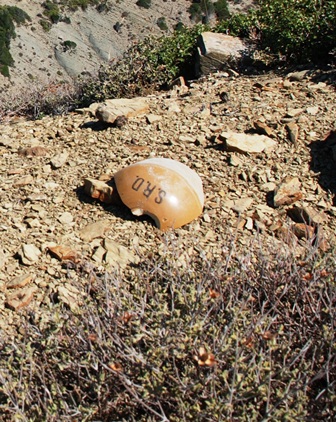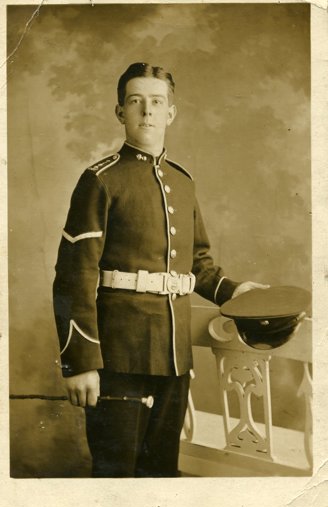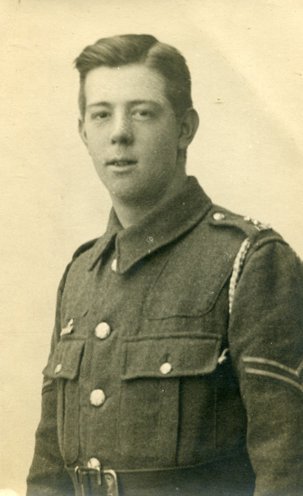28 November 1915
SUVLA - Captain Robert Gee, 2nd Royal Fusiliers, 29th Division - During the early hours of 28 November the casualties in the 2nd Royal Fusiliers were growing; when they eventually came out of the line their numbers had depleted by almost 90%. Captain Gee continues his report.
 “At 2 a.m. 28th the CO brought me half a bottle of whiskey and told me that the Adjutant and himself were the only live persons at the Battalion HQ. At 3:30 a.m. the Adjutant brought me two Officers to help me. All my own Officers and most of the NCOs had gone under, and told me to let the men who could not fight make their own way to the Red Cross station. I passed the order on to each Platoon and about 30 men left, hardly one of whom could walk upright, most of them having to crawl through the mud & water on all fours. I then counted up and found that I had only 27 living souls in the firing line & only 10 rifles in working order. About 5:30 the order to "Retire to Battalion HQ" came along and after waiting for X Company to get clear, the Company started in the following order: No.1 Platoon, No.4 Platoon, No. 2 Platoon, No. 3 Platoon. I stayed with the last 4 men. We had barely gone 30 yards before the 1st, 3rd and 4th man were killed, the two first through the head, and the latter through the heart; 10 yards further on the other man got it and as I lifted him to dress his wound the breath rushed out of his body with an awful sound. I remember falling in the mud and sticking a bayonet in the ground to help me out and the next clear thing I remember was Lt Wilkinson rubbing my feet and bending my toes and they did hurt."
“At 2 a.m. 28th the CO brought me half a bottle of whiskey and told me that the Adjutant and himself were the only live persons at the Battalion HQ. At 3:30 a.m. the Adjutant brought me two Officers to help me. All my own Officers and most of the NCOs had gone under, and told me to let the men who could not fight make their own way to the Red Cross station. I passed the order on to each Platoon and about 30 men left, hardly one of whom could walk upright, most of them having to crawl through the mud & water on all fours. I then counted up and found that I had only 27 living souls in the firing line & only 10 rifles in working order. About 5:30 the order to "Retire to Battalion HQ" came along and after waiting for X Company to get clear, the Company started in the following order: No.1 Platoon, No.4 Platoon, No. 2 Platoon, No. 3 Platoon. I stayed with the last 4 men. We had barely gone 30 yards before the 1st, 3rd and 4th man were killed, the two first through the head, and the latter through the heart; 10 yards further on the other man got it and as I lifted him to dress his wound the breath rushed out of his body with an awful sound. I remember falling in the mud and sticking a bayonet in the ground to help me out and the next clear thing I remember was Lt Wilkinson rubbing my feet and bending my toes and they did hurt."
The War Diary continued:
"The wind got colder and the snow thicker during the early hours of the morning. About 2 a.m. an order came through from Brigade to send back all the men to the Ambulance who would be unable to fire a rifle next day. Accordingly a certain number from each company were sent back, of which a few never reached the Ambulance. About 4 a.m. the CO and Adjutant were the only survivors in the reserve line and decided that not 50 men could live through the next day. Accordingly they went back to the Brigade and the CO got permission to bring back the battalion to the Brigade nullah which was higher ground and was also sheltered. They then went back to the firing line and ordered the battalion of which there were about 300 left to come back. This was accomplished with difficulty as hardly a man was able to walk properly, and the going was very bad indeed with three trenches to cross, each by means of a narrow plank. Very few men were able to do more than get back themselves let alone help others. A few were shot leaving the line and a few failed to get back at all or had to be kicked into some semblance of life. There was no shelling as the blizzard was too thick for the Turkish gunners to see what was happening. A small party was left at the Regimental dump in a fairly dry dugout as a sort of guard. The whole battalion was back in the nullah by 7 pm where they were given warm food, blankets and 150 sheets of corrugated iron. The majority were taken to hospital during the day mostly with exposure or frostbite."
Note: Captain Robert Gee would survive the war. He was awarded the Victoria Cross for an action during the Cambrai fighting in 1917.
Photograph: Remnants of a British Rum Jar still lying on the Suvla battlefield today (Stephen Chambers).
With permission by Mary Ebbs nee Barber
Corporal Norman Barber
No.22 1/6th (Carnarvonshire and Anglesey) Battalion (T.F.), Royal Welsh Fusiliers
Born in Darlington, Co. Durham, and enlisted in Caernarvon, Caernarvonshire, the son of Richard Gibson Barber and Jane Agnes Barber of Waterloo Port, Caernarvon. Died of wounds in the Suvla sector on November 28, 1915, aged 24 years. Buried Lala Baba CWGC Cemetery, Suvla.


SOURCE:
National Archives, Ref CAB 43/224 and the Great War Forum, 'Gallipoli' page.
